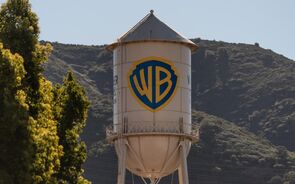General Growth Properties, vai falir ou não???
TLS, eu dou-te a minha opinião, mas não sei se está correcta. Talvez o erro seja, porque se calhar na tua plataforma ainda se encontra a GGP do NYSE e não a GGWPQ do Nasdaq OTC. Poderá ser isso, mas o meu banco não é BCP, nem nunca tive acções de empresas que fossem para o OTC.
- Mensagens: 178
- Registado: 22/1/2008 22:45
- Localização: Alverca
Como ainda fiquei com algumas ações da GGP, agora GGWPQ tentei vende-las e apareceu-me a mensagem seguinte:
EMISSAO NAO TRANSACIONAVEL
page=/secure/pt/15/1520_11.jhtml, code=103(70-1009-111)[/b]
O meu banco é o BCP.
Alguém dá uma ajuda para esclarecer a situação.
Obrigado.
EMISSAO NAO TRANSACIONAVEL
page=/secure/pt/15/1520_11.jhtml, code=103(70-1009-111)[/b]
O meu banco é o BCP.
Alguém dá uma ajuda para esclarecer a situação.
Obrigado.
- Mensagens: 75
- Registado: 17/3/2009 23:35
- Localização: 20
General Growth files for bankruptcy protection
By Ilaina Jonas and Emily Chasan
NEW YORK (Reuters) - General Growth Properties Inc, the second largest U.S. mall owner, filed for bankruptcy protection on Thursday in one of the biggest real estate failures in U.S. history.
Ending months of speculation, the Chicago-based mall owner, which listed total assets of $29.56 billion and total debts of $27.29 billion, sought Chapter 11 bankruptcy protection from creditors along with 158 of its more than 200 U.S. malls, while it seeks to restructure some of its debt.
Since November, General Growth has warned that it may have to seek protection from its creditors when it was unable to refinance maturing mortgages.
The company said in a statement that it planned to continue exploring strategic alternatives during the bankruptcy protection, from which it is seeking to emerge as quickly as possible through a reorganization that preserves its national business.
General Growth's filing in the U.S. bankruptcy court in Manhattan makes it one of the largest nonfinancial companies to succumb to the financial crisis in the U.S.
Before the bankruptcy protection filing, the company had defaulted on several mortgages as well as a series of bonds. It has also put several of its flagship properties up for sale.
Analysts and other real estate experts have speculated that mall owners Simon Property Group Inc and Westfield Group would be interested in buying some of General Growth's assets from bankruptcy.
General Growth has been generating enough cash flow for the company to pay monthly interest costs and expenses, but it has been unable to refinance the principal of loans and mortgages as they come due because banks and other financing sources have been reluctant to issue large mortgages and loans.
"Our core business remains sound and is performing well with stable cash flows," General Growth Chief Executive Adam Metz said in a statement.
"While we have worked tirelessly in the past several months to address our maturing debts, the collapse of the credit markets has made it impossible for us to refinance maturing debt outside of Chapter 11."
General Growth has received a commitment for a debtor-in-possession financing facility of about $375 million from Pershing Square Capital Management LP, as agent.
The hedge fund run by William Ackman also owns about 25 percent of General Growth shares.
Ackman, who has been urging General Growth to file for bankruptcy protection, described it as "a great company" with "phenomenal assets" at a conference on April 2.
At the end of 2008, about $15.17 billion of General Growth's debt was comprised of mortgage loans that had been securitized into commercial mortgage-backed securities, according to research firm Trepp.
"This underscores that real estate companies are most vulnerable to refinancing risk rather than market risk," said Nomura's London-based property analyst Mike Prew. "The U.S. insolvency process is, we think, a cure for General Growth's liquidity problems, which stem from external factors, and not a traditional bankruptcy per se."
Shares of General Growth have deteriorated as the credit crisis worsened. They closed at $1.05 in the United States on Wednesday, making the company's market capitalization $283.90 million, down from $11.l8 billion when it traded at a 12-month high of $44 in May.
So far, fallout from the General Growth bankruptcy has not hit European mall owners. Europe's biggest mall owner, Unibail Rodamco, was trading up 2 percent at 118.69 euros, while Anglo-French retail specialist Hammerson edged up 0.2 percent to trade at 307.75 pence.
HIGH QUALITY MALLS AND TENANTS
The Chicago-based company started when brothers Martin and Matthew Bucksbaum decided to expand the family grocery business and build a shopping center in Cedar Rapids, Iowa, in 1954.
It grew by new development as well as by acquisitions, the largest being the 2004 purchase of Rouse Cos for $14.2 billion. Rouse brought the company 37 of the highest-quality and most valuable malls in the country, including Fashion Show in Las Vegas and Faneuil Hall Marketplace in Boston.
General Growth's refinancing troubles in the frozen credit markets led to the firing of former Chief Financial Officer Bernard Freibaum in October. John Bucksbaum, who succeeded his father Matthew in 1999, stepped down as chief executive the same month, although he remained chairman.
In recent months, the new management team under Metz has been wrestling with loan after loan coming due, bargaining for extensions. As of the end of 2008, General Growth had $1.18 billion in past due debt and an additional $4.09 billion of debt that could be accelerated by its lenders.
Earlier this month, the company had been seeking to restructure $2.25 billion of Rouse bonds, offering bondholders a percentage on their bonds if they allowed the company to skip interest payments and principal until the end of the year. But the company failed to garner the necessary support it needed.
General Growth said several of its other subsidiaries in addition to the malls were also placed into bankruptcy protection, while several properties that are part of joint ventures were unaffected.
The company has hired law firms Weil Gotshal & Manges and Kirkland & Ellis to represent it, according to court papers.
The case is In re: General Growth Properties Inc, U.S. Bankruptcy Court, Southern District of New York, No. 09-11977.
(Reporting by Ilaina Jonas, Emily Chasan and Sinead Cruise in London; editing by Elaine Hardcastle and Lisa Von Ahn)
Fonte: REUTERS
Exacto cannot, muitas vezes enganamo-nos mas percentagens.
Vamos ao ensencial, creio que esta semana será decisiva para o bem dela, pois senão anda neste ram ram, e só degrada a sua situação financeira ainda mais, vamos ver se as notas empresas pela FEd para ajudar os bancos e as financeiras chegam para alimentar a GGP, que está faminta por dinheiro.
POis segundo alguns analistas a empresa até parece que é solvente, pois a tempestade nos EUA, em relação ao imobiliário já bateu no fundo, agora presumo que virá a bonança.
Vamos ao ensencial, creio que esta semana será decisiva para o bem dela, pois senão anda neste ram ram, e só degrada a sua situação financeira ainda mais, vamos ver se as notas empresas pela FEd para ajudar os bancos e as financeiras chegam para alimentar a GGP, que está faminta por dinheiro.
POis segundo alguns analistas a empresa até parece que é solvente, pois a tempestade nos EUA, em relação ao imobiliário já bateu no fundo, agora presumo que virá a bonança.
BULIM123 Escreveu:Artista, obrigado por me corrigires, de facto expliquei-me mal, pois se uma acção cair mais de 100 vezes, ou 100%, fica abaixo de zero.
Vamos lá entender-nos, eu acho que não faz sentido sequer dizer que uma acção caiu 100 vezes o seu valor, ou 2 vezes ou qualquer coisa que seja maior que 1. Se uma acção cai uma vez o seu valor fica a zero, que é o mesmo que dizer que cai 100%.
Aqui está a diferença entre percentagens nas descidas e nas subidas. Uma acção só pode descer 100% mas pode subir uma percentagem infinita em teoria. Isto é porque o seu valor varia entre zero e infinito.
O que podes dizer é que esteve 100 vezes maior em determinada altura. O que é o mesmo que cair 99%, ou dizer que teria de subir 10000% para atingir esse valor.
Digo isto não especificamente por este post mas é que é comum até nas notícias encontrar erros no cálculo das percentagens.
Abraço
"Every solution breeds new problems." Murphy's Law
Artista, obrigado por me corrigires, de facto expliquei-me mal, pois se uma acção cair mais de 100 vezes, ou 100%, fica abaixo de zero.
Fica mais uma noticia.
Pode ser que entretanto o tio obama se lembre dela, mas duvido.
Retail real estate investment trust General Growth Properties, which was unable to drum up enough support from bondholders to reach an extension agreement last week, pushed its deadline to March 20. GGP is asking bondholders to defer until year end collecting interest and, in some cases, principal on $2.3 billion in bonds issued by subsidiary The Rouse Company (REFI, 3/16). As REFI went to press last week, the situation was not resolved.
Bons Negocios.
Fica mais uma noticia.
Pode ser que entretanto o tio obama se lembre dela, mas duvido.
Retail real estate investment trust General Growth Properties, which was unable to drum up enough support from bondholders to reach an extension agreement last week, pushed its deadline to March 20. GGP is asking bondholders to defer until year end collecting interest and, in some cases, principal on $2.3 billion in bonds issued by subsidiary The Rouse Company (REFI, 3/16). As REFI went to press last week, the situation was not resolved.
Bons Negocios.
BULIM123 Escreveu: Caiu cerca de 100 vezes o seu valor...
Como é isso possível, se caisse 100 vezes o seu valor estaria muito abaixo de zero!!!
Não será que estás a querer dizer que teria que subir agora 100 vezes para chegar aos valores a que esteve?! Ou será que sou eu que compreendi algo mal!? às vezes também acontece... para dizer a verdade, acontece frequentemente
abraço
artista
Sugestões de trading, análises técnicas, estratégias e ideias http://sobe-e-desce.blogspot.com/
http://www.gamesandfun.pt/afiliado&id=28
http://www.gamesandfun.pt/afiliado&id=28
Boas noites, e esta menina fechou nos 0,50. 
será que vem de novo aos 0,32 , anda tudo muito caladinho ,pois ninguem sabe aoinda se vai falir??????
, anda tudo muito caladinho ,pois ninguem sabe aoinda se vai falir??????
Quanto vale os activos desta alguem sabe?? Em todas as noticias apenas se sabe que têm mais de 200 centros comerciais nos EUA. Caiu cerca de 100 vezes o seu valor, ´penso que uma entrada na casa entre os 0,25 e 0,30USD, se poderá fazer 100% num apice.
Quem tiver dentro se me puder informar e dar mais umas dicas agradeço.
Muito Obrigado-

será que vem de novo aos 0,32
Quanto vale os activos desta alguem sabe?? Em todas as noticias apenas se sabe que têm mais de 200 centros comerciais nos EUA. Caiu cerca de 100 vezes o seu valor, ´penso que uma entrada na casa entre os 0,25 e 0,30USD, se poderá fazer 100% num apice.
Quem tiver dentro se me puder informar e dar mais umas dicas agradeço.
Muito Obrigado-
Bem a CBL; ainda nao chegou aos 0,3USD, está a 2,66, imagino o que seria se a GGP, chegasse a esta semana aos 2,66, teria lucro na ordem dos 400%, ou seja adquiri umas quantas a 0,37, como diz o Kevin e muito bem o que estou disposto a perder, aliás se falir é mesmo o termo perder tudo, mas também não a estou a ver de novo ir aos 65USD, se for aos 20USD no prazo de 2 anos seria muito bom.
Apenas creio que até ao final do mês de março será decisivo, e será que o estado não a segura como fez a outras??? Afinal se falir muita gente irá ficar desempregada e tem biliões em activos, apenas julgo que esteja a ser uma das vitimas da bola de neve que se criou.
Apenas creio que até ao final do mês de março será decisivo, e será que o estado não a segura como fez a outras??? Afinal se falir muita gente irá ficar desempregada e tem biliões em activos, apenas julgo que esteja a ser uma das vitimas da bola de neve que se criou.
Quem está ligado:
Utilizadores a ver este Fórum: aaugustobb_69, Akinfiev, nbms2012, paul_invest, PAULOJOAO, Tenbaggers e 140 visitantes



